Articles Menu
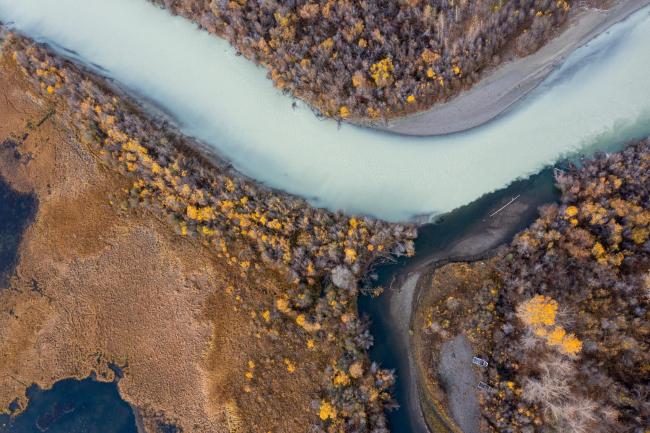
Mar 24, 2021
The Tahltan Central Government is evicting Doubleview Gold Corp. from its territory after the mineral exploration company refused to respect Tahltan laws and policies. Last week, the government issued the company a notice of opposition and said it will do whatever is necessary to make sure the company leaves the territory.
“They’ve been the most ignorant, tone deaf, disrespectful operators in any industry that I’ve ever come across in Tahltan territory,” Tahltan Central Government President Chad Norman Day said in an interview.
The Tahltan Nation in northwest B.C. is generally supportive of mining activity and is known for its collaborative approach to working with industry. The nation has partnered with several mining companies over the years and many of its members make a living working in mines on the territory and elsewhere in the province.
But Vancouver-based Doubleview would not agree to the Tahltan Nation’s protocols.
“We want them out of the territory,” he said. “We’re setting an example of this company.”
Doubleview has been test drilling intermittently for years in a region known to the Tahltan as Sheslay, about 50 kilometres north of Telegraph Creek. The Sheslay River is a tributary of the Taku River, which meets the Pacific Ocean near Juneau, Alaska. Historically, the area was a meeting place for trade between the Tahltan and Tlingit and there are old village sites and burial sites on the land. Some Elders were born and raised in Sheslay.
The region’s mountains and river valley are home to caribou, moose, wolves, bears, salmon and other wildlife. This congregation of animals so close to the community means Sheslay is an important subsistence hunting area for the Tahltan Nation — but it’s also a potential source of gold, copper and cobalt.
On the mining company’s books, Sheslay is known as the Hat Property and is made up of 10 mineral tenures on 6,308 hectares. The province granted the company permits to drill at 45 sites, valid until 2025.

Sheslay was a traditional meeting place for trade between the Tahltan and Tlingit and there are still remnants of old village sites, such as this cabin. Photo: Tahltan Central Government

Doubleview old Corp. has been drilling near the Tahltan Sheslay settlement, which includes a traditional burial ground.
Photo: Tahltan Central Government

Sheslay’s mountains and river valley are home to caribou, moose, wolves, bears, salmon and other wildlife. Photo: Tahltan Central Government
Gavin Smith, a lawyer with West Coast Environmental Law, told The Narwhal that B.C.’s Mineral Tenure Act does not consider Indigenous Rights and Title and allows any individual or company to purchase a tenure without consultation or consent. And when a conflict like this comes up, the province has few tools to address the situation except for buying back the tenures based on the price they would fetch on the free market.
He said reforming B.C.’s mining laws is essential as the province works on implementing the principles of the United Nations Declaration on the Rights of Indigenous People, which it adopted into legislation in 2019.
“The whole regime is really problematic from start to finish in terms of setting the stage for the kinds of conflicts that I think we often see,” he said in an interview. “It is hard to imagine an act that is further from implementing UNDRIP than the Mineral Tenure Act.”
He said the legislation has to be changed to prevent situations like this from happening again.
“What we need is legislation that recognizes the role of nations making decisions up front, before a claim is granted, before this ball starts rolling down the hill and everyone has to chase after it.”

The Sheslay River is a tributary of the Taku River, which meets the Pacific Ocean near Juneau, Alaska, and is an important spawning ground for wild salmon. Photo: Tahltan Central Government
The Ministry of Energy, Mines and Low Carbon Innovation declined an interview request and said it supports mining projects that develop strong relationships with First Nations.
Doubleview did not respond to requests for comment but according to the company’s website, it is planning “an aggressive 2021 exploration program.”
Day said that’s not going to happen.
“If the company makes efforts to go out there and work the property, then there may be conflicts on the ground.”
Read more: Groups call on B.C. to fund Indigenous monitoring of mines in traditional territories
Conflict between the Tahltan Nation and Doubleview dates back to 2011, when the company announced its plans to conduct exploratory work in Sheslay. The Tahltan Nation voiced opposition, arguing the area was historically and culturally important. The nation also said that given the area’s history, an archaeological assessment was needed.
The company eventually agreed to conduct preliminary archaeological studies in 2014 and discovered obsidian artifact fragments under its camp and identified areas where similar artifacts would likely be found. As a result of these findings, the province added a condition to the company’s drilling permit that required it to conduct an archaeological impact assessment before doing any more mineral exploration.
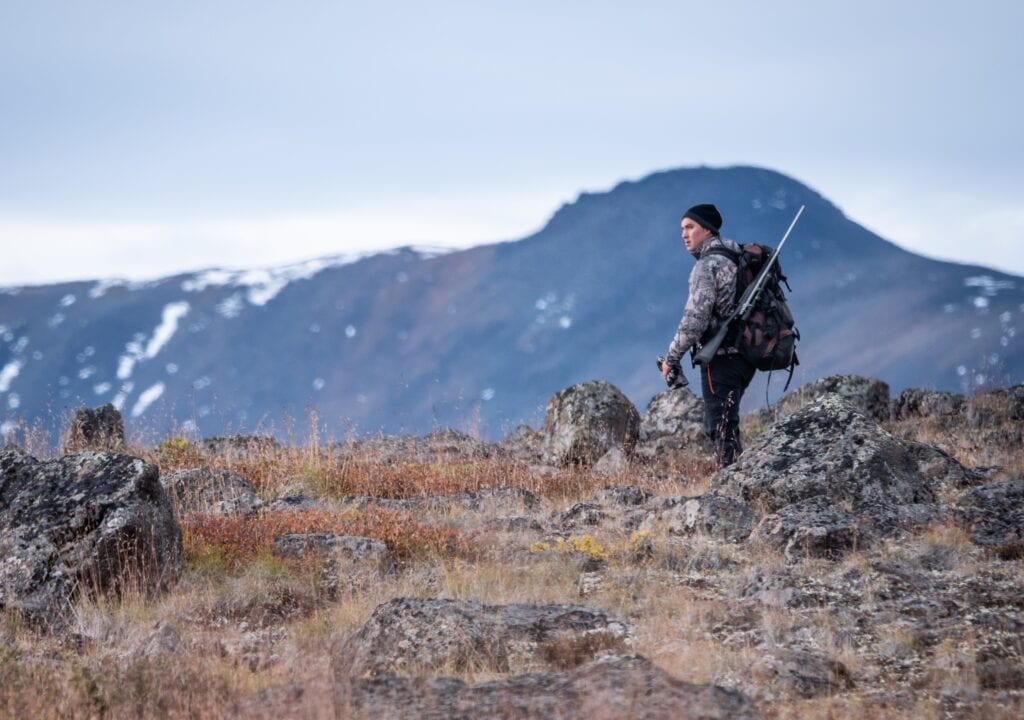
Tahltan Central Government President Chad Norman Day says his nation has long opposed Doubleview Gold Corp.’s work in Sheslay, which is an important area for subsistence hunting. Photo: Adam Amir / Tahltan Central Government
But in 2015, the company started drilling again without doing so, contracting a local company mostly staffed by Tahltan community members to do the work. Concerned about the potential impacts, four Elders, accompanied by Day and Heather Hawkins, former vice-president of the central government, went out to the mining camp.
The Elders asked to speak with the workers and told them the Tahltan people did not support mining in that area, explaining that Sheslay is a sacred place. Day asked them to stop drilling. Two days later, the employees agreed to respect the Elders’ wishes and left the site.
In response, Doubleview president and CEO Farshad Shirvani called the RCMP, described the meeting as a blockade and took the Elders and government leaders to court, seeking an injunction against them.
“What kind of mineral exploration company in Tahltan territory sues Tahltan leaders and Elders who were born in the area that they’re drilling in and making a mess of?” Day said.
The B.C. Supreme Court dismissed the case in 2016, but Doubleview never left the territory. Day said the Tahltan Central Government made repeated attempts to negotiate with the company, offering the same terms of engagement it provides other mining companies, in hopes of establishing a positive working relationship.
Day said Doubleview’s plans to ramp up its exploratory work while refusing to meaningfully engage with the nation was the “straw that broke the camel’s back.”
“We’re willing to be good partners, but we’re also willing to dig our heels in when people are disrespectful and want to test us,” he said.
There are three operating mines and more than 70 active mineral exploration claims on Tahltan territory, according to the nation’s 2020 industry review. One of the active mines is Red Chris, about 20 kilometres from Iskut, a Tahltan community just south of the Stikine River. Formerly operated by Imperial Metals, the mine is now owned and run by Newcrest, an Australian mining company. The company acquired the mine in 2019, agreed to the Tahltan engagement framework and has been working closely with Tahltans since.
Janine Bedford, superintendent of community relations for the mine, told The Narwhal in an email that Red Chris employs around 220 Tahltans and has an agreement with the nation to give priority to Tahltan job applicants.
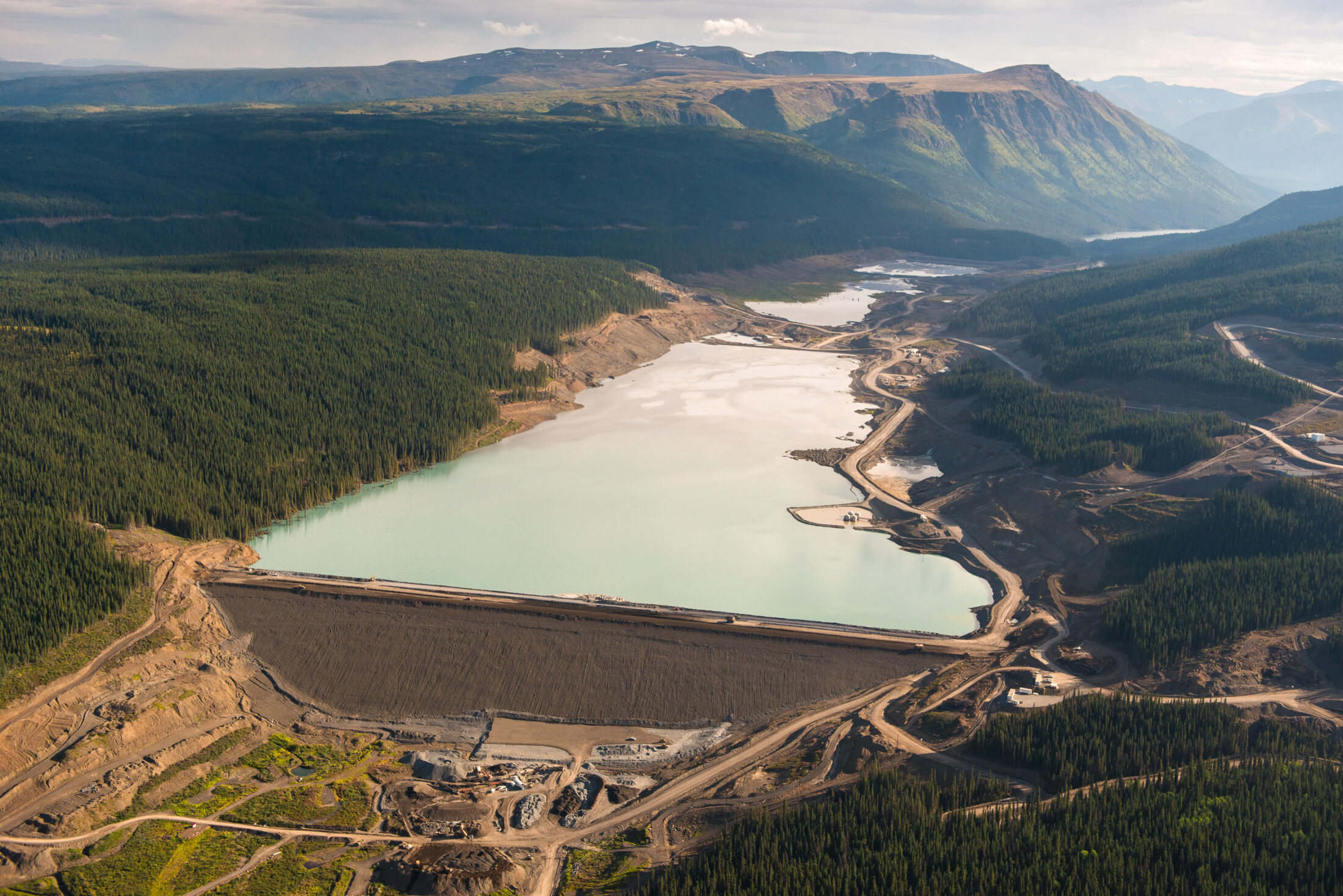
Newcrest, owner of the Red Chris mine, works closely with the Tahltan Nation to ensure the community benefits from the project, whether through jobs or investments in health care and community development. The mine’s tailings pond facility is shown here. Photo: Garth Lenz / The Narwhal
She said the company also provides Tahltan communities with resources, including an advanced care paramedic, medivac support, medical and cleaning supplies, groceries and funding for cultural programs.
But while the Tahltan Nation will work with companies like Newcrest, there are places on the territory that are off-limits and activities the nation will not allow. The nation adamantly opposed industrial activity in the Sacred Headwaters, the source of the Stikine, Nass and Skeena rivers, successfully protecting the area from a proposed coalbed methane project in 2012 and from all industrial development in 2019. And, as The Narwhal previously reported, the Tahltan Central Government recently served a number of eviction notices to jade placer miners operating without consent on the territory.
As the nation continues to enforce its rules on the territory, it is also working on plans to permanently protect Sheslay. In 2019, the federal government committed $3.9 million through the Canada Nature Fund to support the nation’s land use plans, which include setting up Indigenous Protected and Conserved Areas on the territory. Tahltan stewardship planning identified three areas the nation would focus on: Klappan, Ice Mountain (Mount Edziza) and Sheslay. In total, the proposed protection would span over one million hectares.
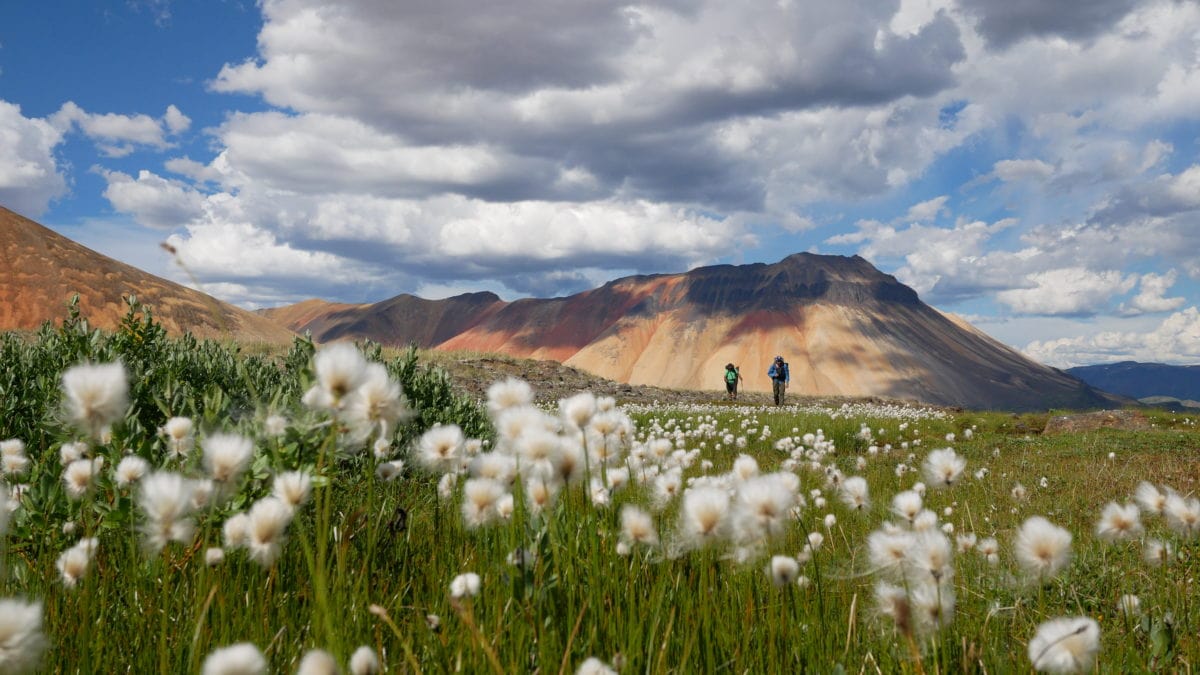
The volcanic landscape surrounding Ice Mountain (Mount Edziza) is a source of obsidian, which the Tahltan traded with other nations around the province. Tahltan obsidian has been discovered as far away as the foothills of the Rocky Mountains in Alberta. Photo: Carol Linnitt /The Narwhal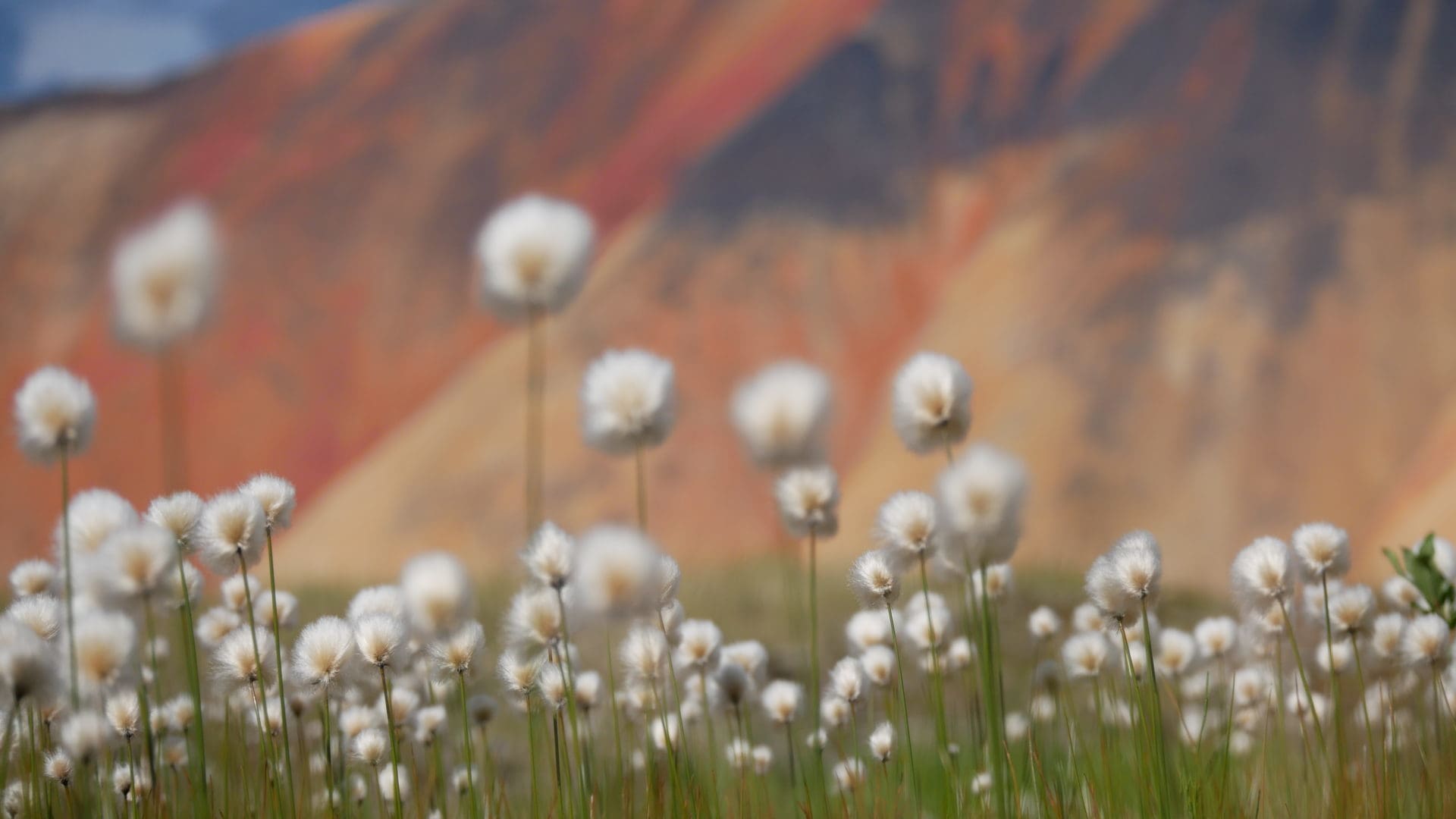
Arctic cotton tufts grow in Mount Edziza Provincial Park, which protects around 230,000 hectares of Tahltan territory in northwest B.C. Photo: Carol Linnitt / The Narwhal

The Tahltan Nation is hoping to establish Indigenous Protected and Conserved Areas in several areas including Sheslay and Ice Mountain (Mount Edziza), shown here, part of which is already protected as a provincial park. Photo: Matt Simmons
The stewardship and land use planning is ongoing and Sheslay remains unprotected under provincial law. Day said he will be speaking with the province about what happens next with the conflict between the Tahltan Nation and Doubleview.
“It’s going to be on the province to deal with us and to deal with the company to come up with some kind of a resolution,” Day said, adding that the nation has a good working relationship with the province and he expects they will be able to come to an agreement.
[Top photo: The region known as Sheslay on Tahltan territory in northwest B.C. is a sacred place, but Doubleview Gold Corp. has been test drilling there without the Tahltan Central Government’s permission for several years. Photo: Tahltan Central Government]